In the seas of the Gulf of Mexico, near the coast of Veracruz, there are dozens of reefs forming an underwater mountain range that is divided into three regions. To the north, in Tuxpan; to the center, in the port of Veracruz, and to the south, in Los Tuxtlas.
These are three reef systems that are home to hundreds of species of mangroves, seagrasses, turtles and fish. As necessary for the health of the oceans, as they are for life in the world.
This marine diversity is damaged by an industrial and oil zone in the north and south, in addition to the effects of overfishing, tourism, agriculture and pollution present throughout the state of Veracruz.
In the midst of this resistance of nature to human activity, the federal government plans to build a 715-kilometer offshore gas pipeline that will run along the coast of the Gulf of Mexico.
The route goes from Tuxpan, in the north of the state, to Dos Bocas, a port in the neighboring state of Tabasco. This project is known as the “Gateway to the Southeast”.
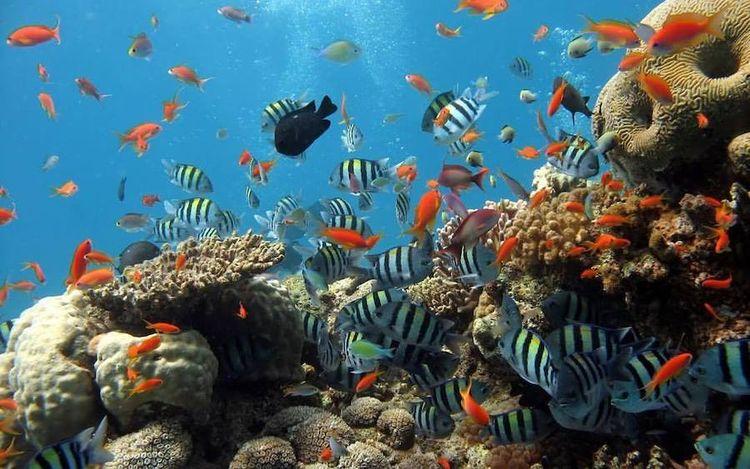
The Lobos - Tuxpan Reef System, as well as the Veracruz Reef System, are categorized as Protected Natural Areas. Photo: Conanp Archive.
The objective of the mega-work, which in turn connects with other gas pipelines built in recent years, is to meet the growing demand for natural gas that exists in the country for the generation of electrical energy, mainly industrial.
But the details of the gas pipeline, such as its location and the coordinates of the route, are “classified information” for reasons of “national security”. A common argument in megaprojects promoted by the government of President Andrés Manuel López Obrador, such as the Maya Train.
The lack of transparency and concern for reef systems have generated great uncertainty surrounding the project. While voices from fishing communities, specialists and environmental groups resonate with questions and proposals, the works are driven by silence.
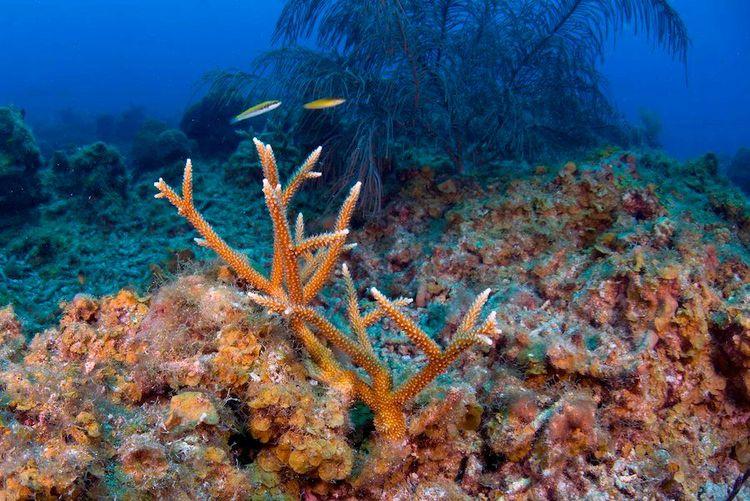
Reef systems can be habitat for hundreds of marine species. Photo: Conanp Archive.
Building at sea
The Puerta al Sureste gas pipeline is a public-private project. It is developed between the Federal Electricity Commission (CFE) and the company Transportadora de Gas Natural de la Huasteca, a subsidiary of TC Energía (formerly called TransCanada, which has been responsible for other gas pipeline systems in recent years).
For Puerta al Sureste, 4.5 billion dollars will be invested. With a view to the project starting activities in 2025 and having an average lifespan of 30 years, according to TC Energía.
The system will start on the ground, at the Tuxpan compressor station. You will continue on the water until you stop in Coatzacoalcos, south of Veracruz, to dive again and reach Dos Bocas, Tabasco. This is where another of the current federal administration's star projects is located: the Olmeca Refinery.
“This project will be developed with all the care and respect in relation to the environment, avoiding ecologically sensitive areas and taking the necessary measures to prevent damage to ecosystems,” TC Energía says on its website.
The Environmental Impact Statement (MIA), which is part of the technical studies to evaluate the impact on the environment, is available for consultation, but it is divided into two (sheets 30VE2022G0060 and 30VE2022G0072) and there is censored information, mainly images, regarding topics such as the route of the gas pipeline.
This is because it is considered “confidential information” since it compromises “national security, public security or national defense”, according to article 113 section I of the General Law on Transparency and Access to Public Information (LGTAIP), cited in the MIA.
“This means that we are not sure where the gas pipeline will pass and what the associated impacts could be,” said Yoatzin Popoca, a lawyer at the Mexican Center for Environmental Law (CEMDA).
The CEMDA has warned that inaccuracies in the MIA could affect the Southwest Gulf of Mexico Reef Corridor (CASGM), which consists of the Lobos - Tuxpan Reef System Protection Area, in the northern region of the state, and the Veracruzano Reef System National Park, in the port of Veracruz, as well as the Los Tuxtlas Reef System to the south.
In a review of the MIAs carried out by Journalism CN, it was found that the distance at which the Lobos - Tuxpan Reef System project will be 550 meters (five and a half blocks).
On the other hand, there will be 3 kilometers in between with the Veracruz Reef System and almost 10 kilometers with Los Tuxtlas.
In February of last year, works for the expansion of the port of Veracruz were suspended by decision of the Supreme Court of Justice of the Nation (SCJN) when it granted protection to two citizens. As part of the impact on reefs, local media reported that for this project the closest coral reef to the works was 940 meters away.
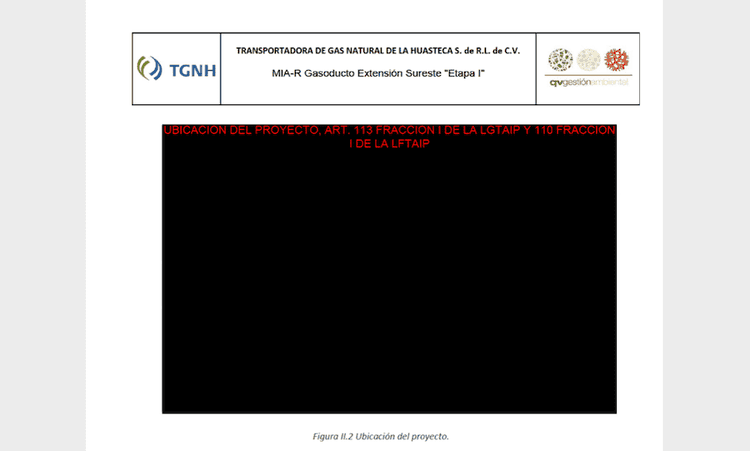
Sample of the illustration with the location of the project in the Environmental Impact Manifestation.
In August, CEMDA, together with other civil organizations, demanded that the Security, Energy and Environment Agency (ASEA), responsible for reviewing the works, discard the “Southeast Extension Gas Pipeline Stage I” and “Gas Pipeline Southeast Extension Stage II” projects.
One of the signs was that two MIAs were presented. Part one for land works and part two for the sea.
According to the organization, fragmenting the environmental studies of a project prevents the authority from carrying out a more comprehensive analysis and evaluating cumulative impacts.
“We are not going to be able to understand the implications of this gas pipeline on reef systems if we don't have a serious environmental impact assessment, if we don't go through a robust process, especially in light of this energy transition that should be just,” said lawyer Popoca.
The company responsible for preparing the MIA for the project is QV Environmental Management. A consultant with registered office in Mexico City, for which there is no record or record other than a LinkedIn site and a blank website.
In the Environmental Impact Manifestations, the consultant states that the gas pipeline will not pose a severe risk to reefs or to the ecosystem, both terrestrial and marine. This is taking as a reference some environmental laws cited in the study, such as the General Law of Ecological Balance and Environmental Protection (LGEEPA).
The consultant was contacted to clarify the details of the MIAs and include them in this report, but they answered that they are unable to provide information because of “confidentiality agreements”.
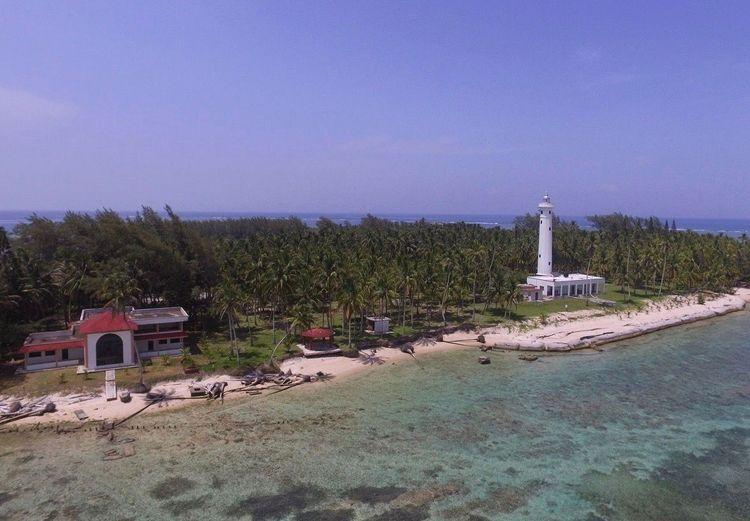
View of Lobos Island in Tuxpan. Photo: Conanp Archive.
Science and Fishermen
Unlike other places in Mexico, in Veracruz, reef health remains above average. “We have the same problems as all the reefs in the world,” is how Francisco Javier Martos, professor and biologist at the Coral Reef Laboratory of the Universidad Veracruzana (UV) on the Tuxpan campus, summarizes it.
The unique thing about Tuxpan is that it is an industrial area. Here you will find the Adolfo López Mateos thermoelectric power plant of the CFE and the maritime terminal of Petrleos Mexicanos (Pemex).
Decades of production have made it possible to document how the discharge of water containing pollutants such as heavy metals reaches the Tuxpan River, the Tampamachoco lagoon and the mouth to the sea that connects to Lobos Island where the reefs are located, also affecting fishermen and marine species.
“Strangely enough, human activity that is not carried out on site affects the reef zone the most in the case of Tuxpan, similar to the rest of Veracruz,” Martos explained.
According to the biologist, the threats faced by coral reefs can be chronic or temporary and extensive or specific. Common pollutants that reach the sea could be considered a chronic and extensive problem. On the other hand, the impact of a ship on the reef is a temporary and specific issue.
It could be assumed that if the proposal is to build the gas pipeline 550 meters from the Lobos - Tuxpan Reef System, the damage will be interpreted as those caused by industries: chronic and extensive. But for the UV biologist, the most determining factor of this megaproject in the pipeline is that it is carried out under the law.
“There are many environmental control strategies for projects, but that doesn't guarantee that the developer will do it. This is why government agencies are obliged to oversee the work carried out by the promoters,” he said.
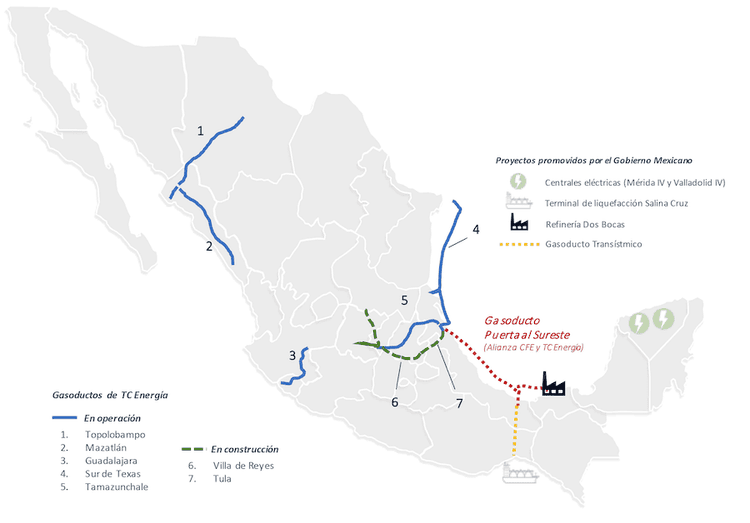
Mapping of TC Energía's gas pipelines. In red, the Puerta al Sureste gas pipeline. Source: TC Energía.
Even with its extension, the Gateway to the Southeast project is part of a larger gas pipeline network. It is located in Tuxpan with the pipeline that comes from Southeast Texas; the one that connects to Tula reaches right there. While in Coatzacoalcos it has a connection to the transisthmic gas pipeline that runs through Oaxaca.
Fishermen from Tamiahua, a municipality north of Tuxpan, where the Southeast Texas Gas Pipeline is already installed, mention that the problem of low catches in their fishery was combined with a lack of information about the work.
“We were fighting, shouting and maybe fighting with federal authorities because they didn't give us information to the fishing sector in advance or an environmental study to see if there was an impact on the future,” said Luis Puga, a fisherman from the Tamiahua lagoon.
Puga recalls that when the tests were done, there were some explosions that echoed and scared away marine species. The federal government's response was financial compensation for the fishermen.
“We asked more and were told that it was a matter of national security,” said the fisherman, who insists that an environmental assessment could help them better understand the changes in their fishing activity and the repercussions in the future.
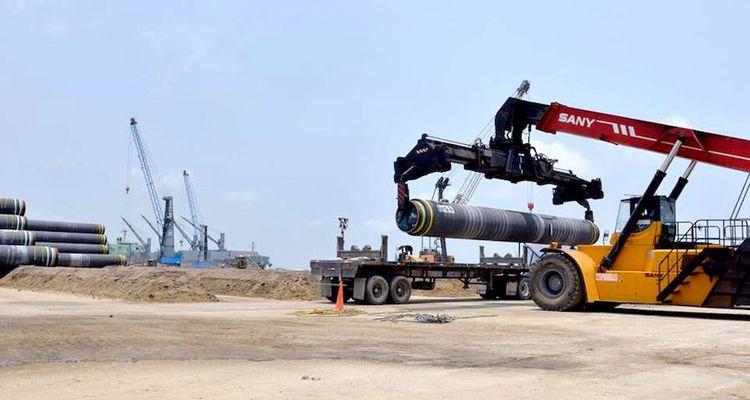
Construction of the Texas - Tuxpan gas pipeline. Photo: Ministry of Energy.
Gas pipelines in the crisis
The construction of gas pipelines during the current administration seems to be the answer to a country like Mexico. One of the main importers of natural gas, mainly from the United States.
Since the beginning of 2000, demand for natural gas in the country has increased, but it was in 2014, with the energy reform of then-president Enrique Peña Nieto, that it accelerated.
According to figures from recent years, the share of natural gas in the energy basket exceeds 48% and is still on the rise and its consumption has increased by 32% since 2010.
However, for specialists, continuing to invest in the sector of fuels such as natural gas, which are almost entirely imported by the United States, goes against the discourse of energy sovereignty that has been promoted in recent years. In addition to the international agreements in which Mexico has committed itself to combating the climate crisis.
“These types of projects are no longer feasible. I think we are already quite far from the point of return where we could still say that ecosystems resist. We've been through that because we're already talking about the fact that it's not just the effect on water or reefs, it's the impact they also have on the communities of people who depend on these ecosystems,” said Yoatzin Popoca, a lawyer at CEMDA.
For Pablo Ramírez, an energy and climate change specialist at Greenpeace, betting on hydrocarbons is not sustainable either, since they are also running out.
“If you ask if there is a model that can replace natural gas so that industrial production continues to grow, the answer is no. We live in an era in which the peak of oil production and hydrocarbon reserves has passed. We're playing in the overtime of the fossil era,” he said.
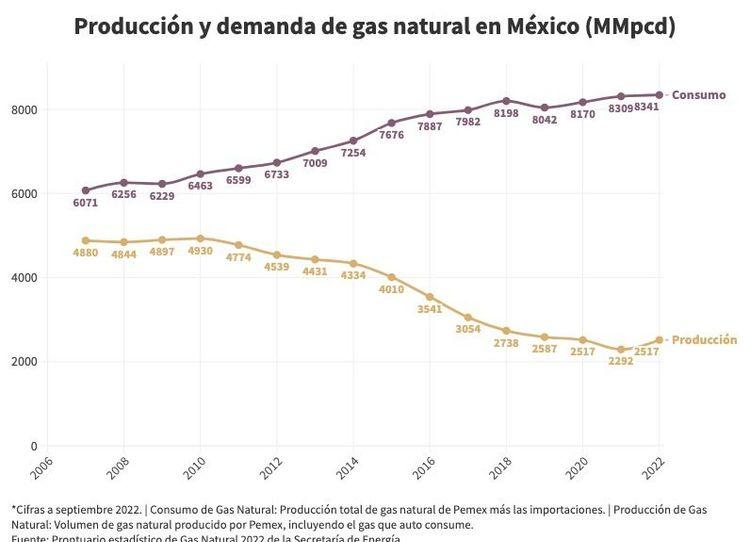
[Click here for interactive graphic]
“It's important to ask the questions of who this sector benefits and who energy is focused on. Of all this gas, half goes to electricity generation, but more than 60% of that electricity consumption goes to industry. So who does that gas really benefit?” , Ramirez questioned.
***
Added note: After the publication of this report, the Security, Energy and Environment Agency (ASEA), which is the decentralized technical body of Semarnat responsible for overseeing industrial safety and environmental protection, responded with transparency that it does not have the coordinates of the route of the Puerta al Sureste gas pipeline.
The reason for the lack of information, according to the agency, is in article 29 of the Internal Regulations of the National Agency for Industrial Safety and Environmental Protection of the Hydrocarbons Sector, which lists the powers of the General Directorate of Industrial Process Management and does not explicitly include what is linked to knowing the location.
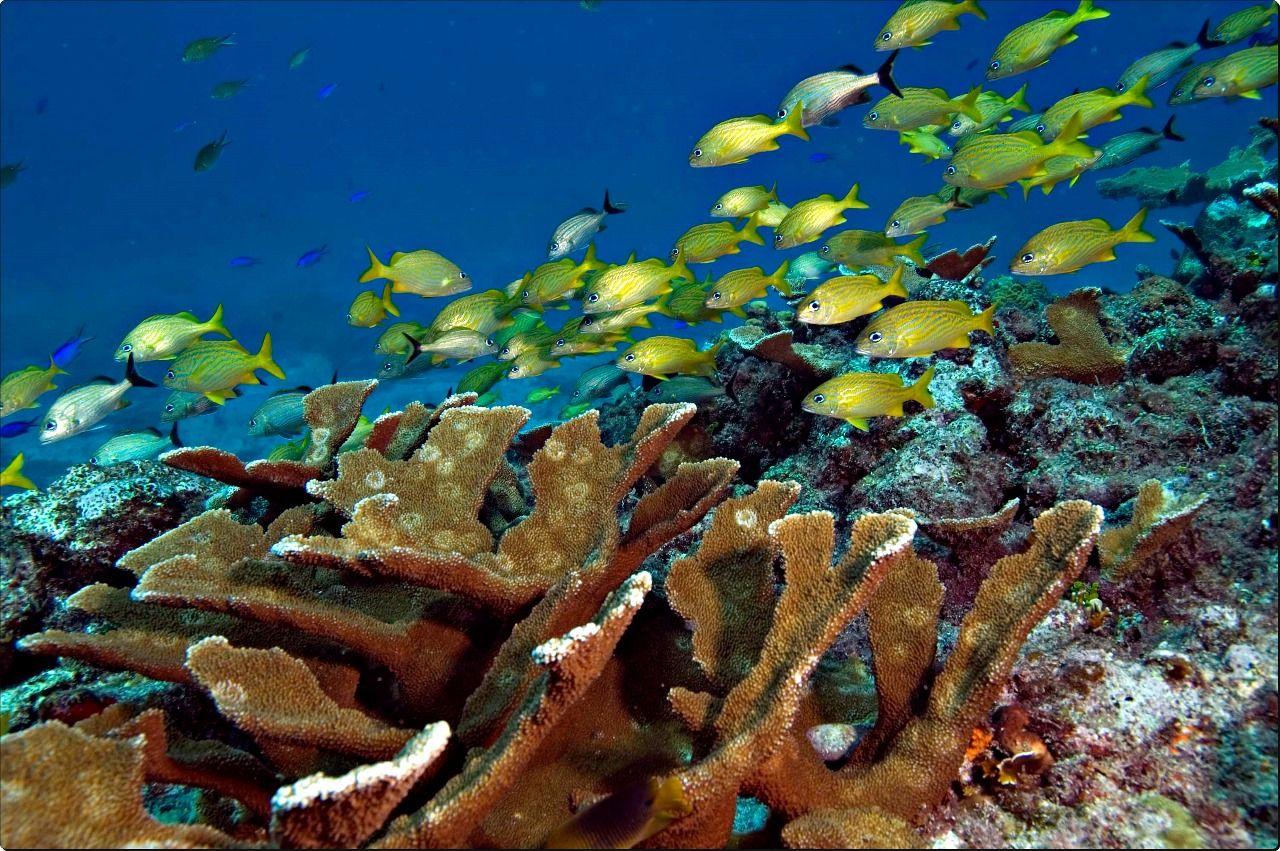


Comentarios (0)